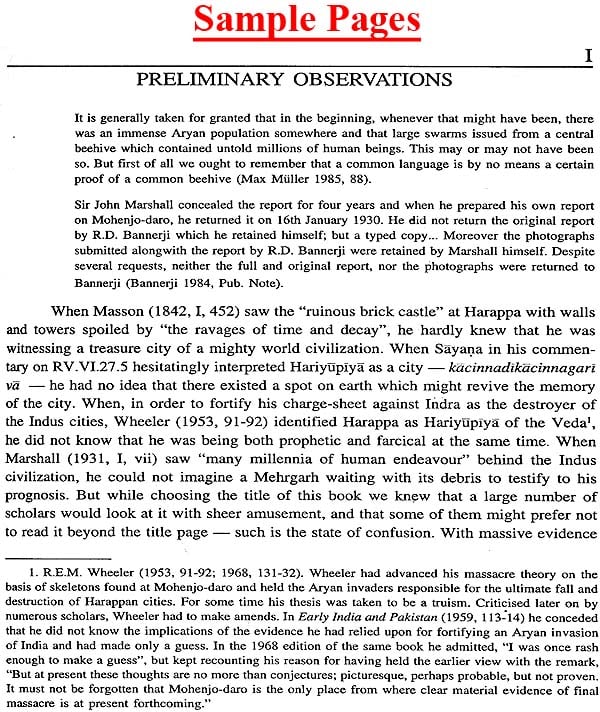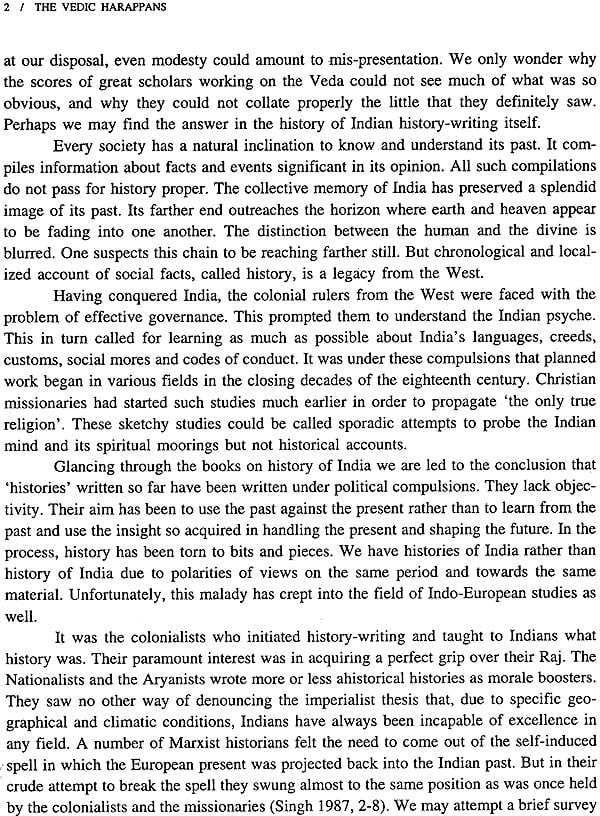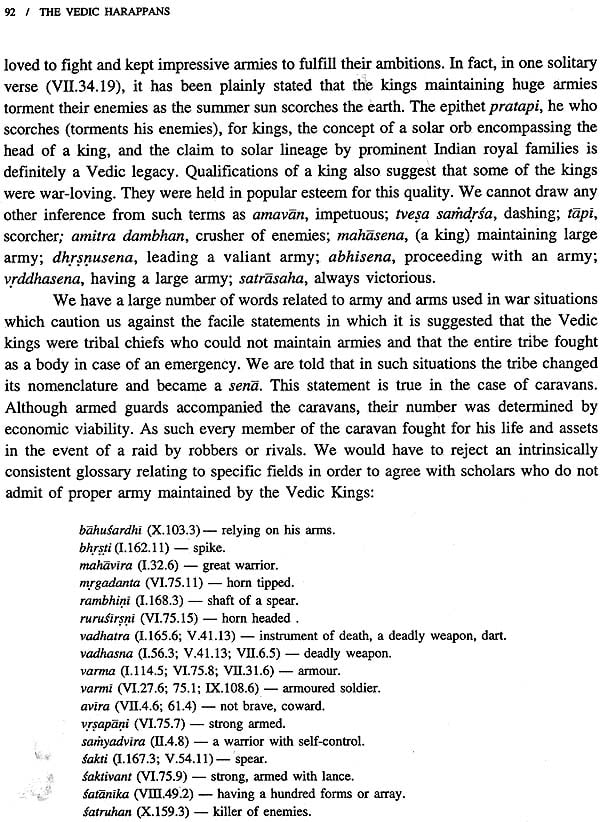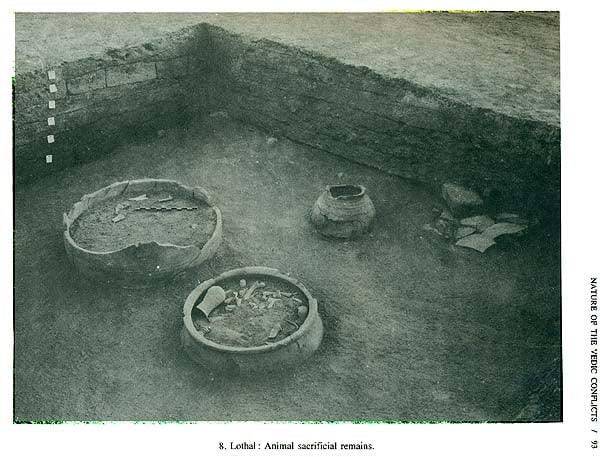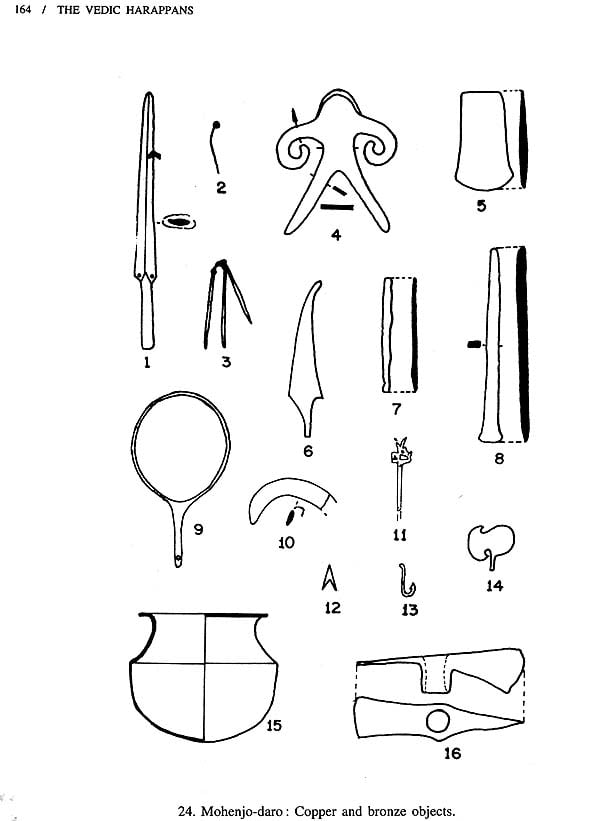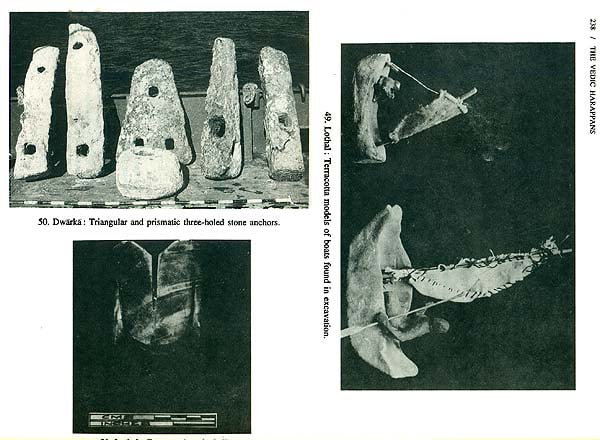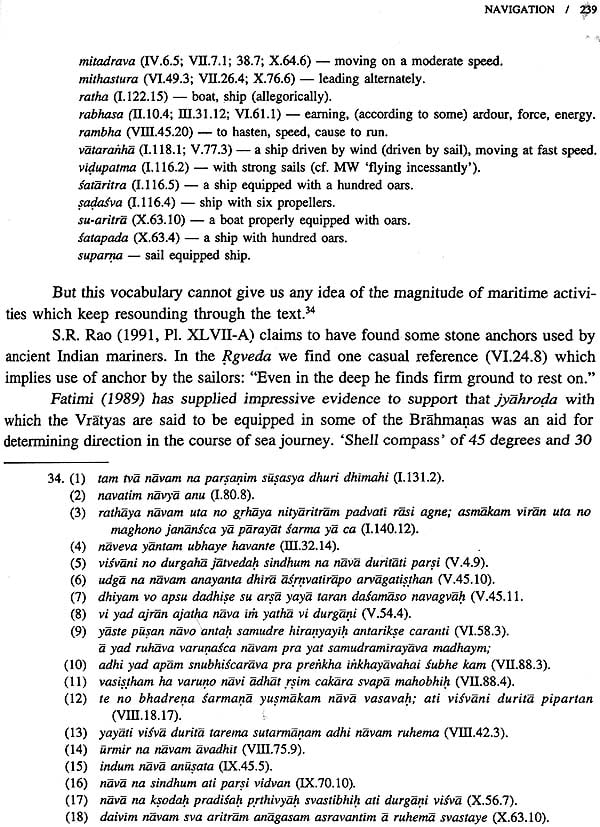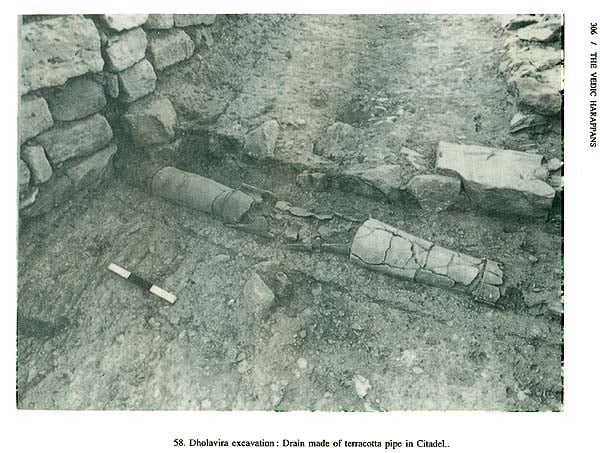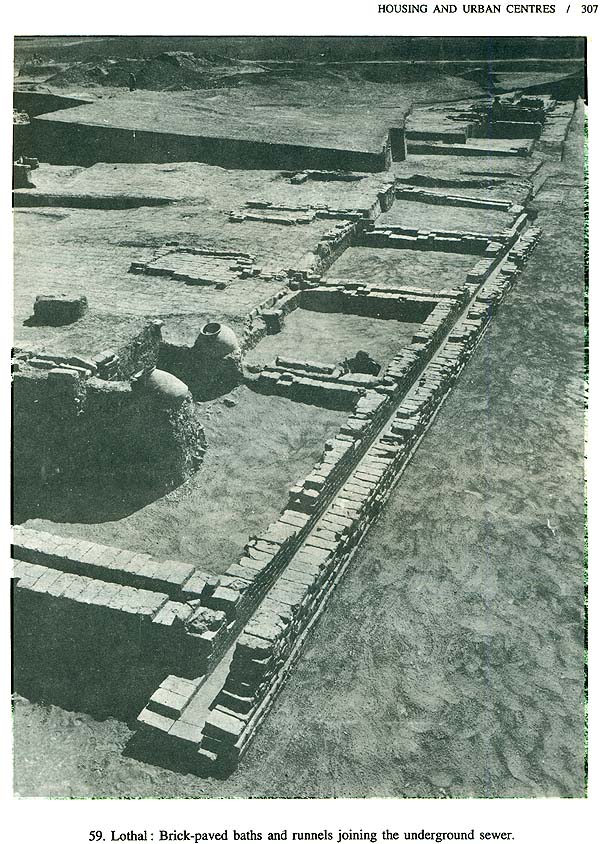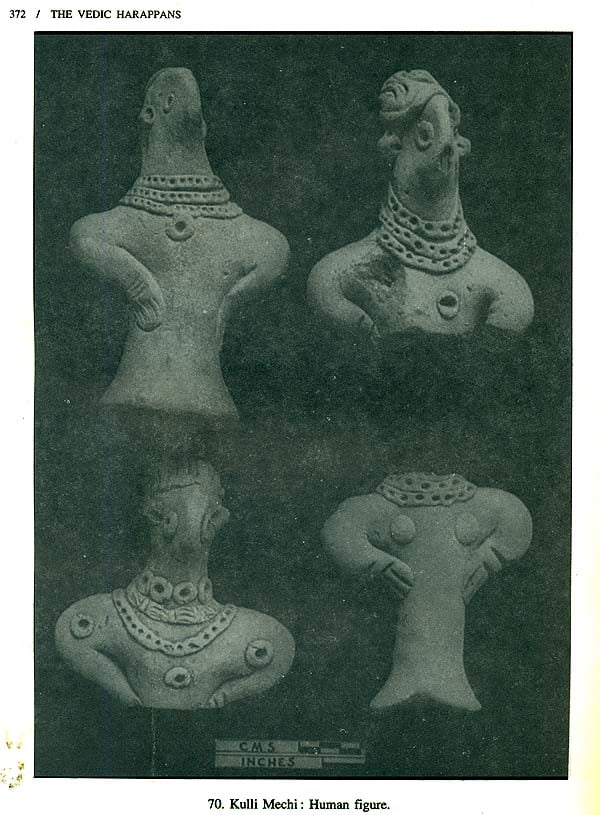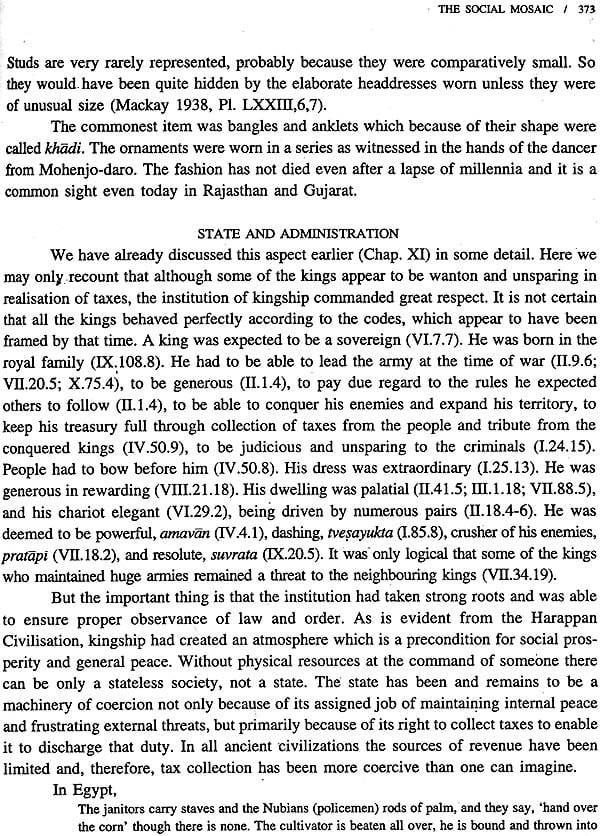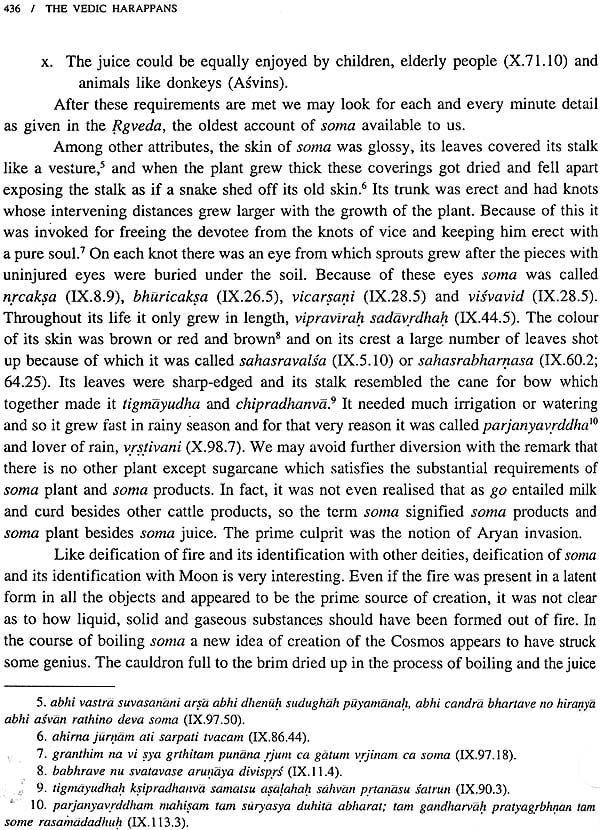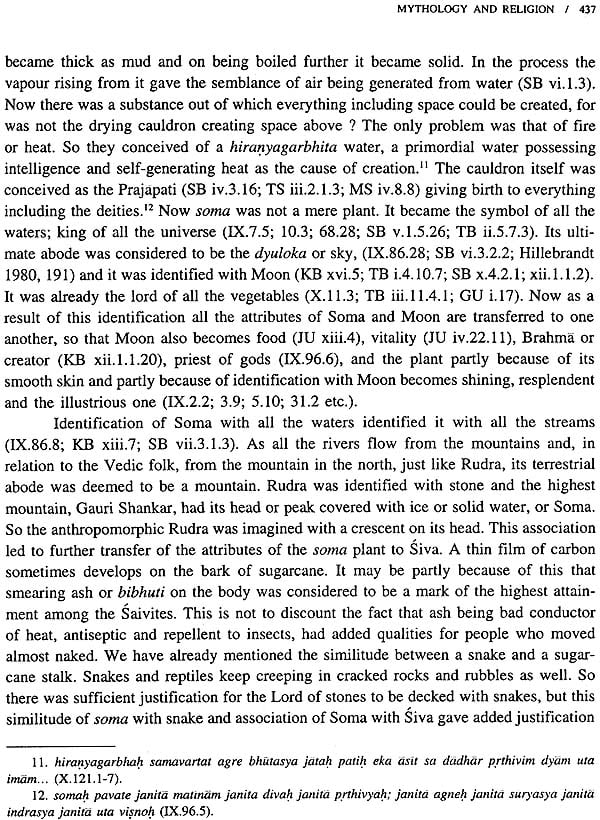
The Vedic Harappans
Book Specification
| Item Code: | NAN108 |
| Author: | Bhagwan Singh |
| Publisher: | ADITYA PRAKASHAN |
| Language: | English |
| Edition: | 1995 |
| ISBN: | 8186471049 |
| Pages: | 518 (52 B/W Illustrations) |
| Cover: | Hardcover |
| Other Details | 11.0 inch x 9.0 inch |
| Weight | 1.50 kg |
Book Description
Books on ancient Indian history are based partly on borrowed imagination and partly on distorted facts. They conceal boldly and reveal sceptically. We have formed a habit of listening to and believing in fantastic stories, both at home and abroad, about the origin and devolution of Harappan civilization and differentiation and dispersion of Indo-European languages. No wonder that the students of ancient India received a jolt with the publication, in 1987, of Harappa Sabhyata aur Vaidika Sahitya (Harappan Civilization and Vedic Literature) by the author of the present work. It provided ample evidence to change most of the basic premises and open the closed doors of perception of the hidebound scholars. It explained all the anomalies and pointed out as well as answered most of the questions raised but not discussed by those who professed that the Vedic civilization had a distinct origin and different social structure, economy and idiom from the one called Indus or Harappan civilization. Scholars found it to be one of the most thought provoking books ever written in any language on the subject. Many of the postulates of the author have been vindicated by archaeologists and specialists in allied fields in the past eight years, even though most of them could not have seen the book due to the language barrier.
The present work, The Vedic Harappans, has a wider scope and is a more authoritative work than the one published in Hindi. Massive data elucidating most, if not all, aspects of Harappan material culture including agriculture, industry, mining and metallurgy, trade, navigation, language, social set up, urban planning, public administration and religious beliefs, make it immensely valuable to all students and scholars of history, culture, archaeology and linguistics, no matter what their individual propensities and formulations happen to be. No serious scholar can afford to ignore the hard data and the clinching conclusions offered by the book for the first time. One may differ from some of the hypotheses built in order to explain the missing links which have plagued the investigators regarding the formative period of the Harappan civilization, or with the methodology adopted for reconstructing some features about which the author is himself sceptical. But the work as a whole makes short work of the crooked theories and mischievous notions ingeniously designed by those who were motivated by extraneous considerations or who used history as a ploy.
This book acquires a part of its significance from the fact that it throws some light on some aspects of the world civilization as well. The author does not conceal the fact that he has not been able to make exhaustive use of the material available in the Vedic literature. He has, however, tried consciously to be least 'original' and as much orthodox as possible, and his book derives much of its authenticity from his adherence to traditional commentators and modern lexicographers. It is only occasionally that some departures have been made in the light of the new and well known archaeological findings.
The book keeps referring to findings in several other fields - archaeology, archaeozoology, archaeobotany, anthropology, geology, genetics etc. - in order to exercise strict control and obviate risks of . personal proclivities.
Born on 1 July 1931, Bhagwan Singh is known for the following works published in Hindi between 1963 and 1995: Kale Ujale Tile (novel, 1963); Apane Samanatara (poems, 1971); Sthana Namon ka Bhashavaijnanika Adhyayana (topography, 1973); Mahabhisheka (novel, 1973 reprinted in 1992); Arya Dravida Bhashaon ki Mulabhuta Ekata (philology, 1973); Harappa Sabhyata aur vaidika Sahitya (history, 1987 reprinted in 1990 and 1995); Upanishdon ta Kahaniyan (stories from the Upanishads retold, 1993 reprinted in 1995); and Pancatantra (a classical story retold, 1995).
The Rgveda by itself is a unique work in more than one sense. It represents an entire age comprising several phases as admitted even by its detractors. It was composed by the priestly poets of a society which had reached its culmination point within the technical limitations of its age centuries before the oldest of the hymns handed down to us were written. From metre to diction it shows extreme caution and command vying with the technicians.
It appears that due to a long tradition of crafts even the common man had broadly familiarised himself with most of the technical and technological developments. How else could he understand the allegories and similes referring constantly to specialised activities? It is not merely a chance that the poets compared their verses with chariots made for transportation of goods: "I frame my laud, as the Wright a chariot" (I.61.4}; "Eager for riches men have formed for thee these songs, like a skilful craftsman fashions a car" (1.130.6). They aspire to come equal to the craftsmen, "a thought have I imagined like a workman" (Ill. 38.1); "I bend with song, as bends a wright his wheel of solid wood" (VII.32.20); "So they have strengthened this mine hymn ... Thus forms a carpenter the yoke of horses not to be displaced" (X.93.12). "As a wright bends a chariot seat so round my heart I bend the hymn" (X.119.5). The only difference is that of the medium: while craftsmen used material objects to fabricate their products, the poets employed words. I know of no other book which makes use of technical terms so liberally as to foreshadow all the material developments of the civilization of which it was a part even without directly referring to it.
It was this realisation which prompted me to compile a glossary of technical terms occurring in the Veda. I checked their lexical meaning in the Vedic context and classified them subject-wise after the second draft of the book was complete. The result was far more rewarding than I had expected. It was too late a stage to integrate the entire information in the text. I have therefore made selective use of this terminology in insets and slightly modified the text at places.
The terms in the insets speak for themselves. Those integrated in the text may occasionally need some improvement. However, as a result of this exercise I have consistent information on some of the cultural aspects about which the position so far was bleak. Pottery is one such area. Despite frequent allusions made to various shapes of pottery in the Rgveda, scholars could not identify the Aryan pottery. They were self convinced that the 'Indo- Aryans' were not familiar with the potter's wheel. I came across some terms related to wheel such as cakri, cakriya, asmacakra, uccacakra, kucakra. There is no problem with cakra, information on which is almost complete. Kacakra was misinterpreted by me (Singh 1987, I, 116, 123, 11, 136) as dhekula, a counterweight device to lift water, because water-wheel appeared to be far advanced. Now, in the light of this class of terms, there is no escape but to take it as such. It is more hazardous to determine which types of wheels - cakriya, asmacakra, uccacakra could have been. Cakriya could be taken for grinding wheel - cakki (vi vartethe ahani cakriya iva, 1.185.1). It is tempting to interpret asmacakra, stone wheel, as potter's wheel, caka, as the latter is invariably made of stone. Uccacakra, wheel revolving above ground, also comes very close to potter's wheel, specially when it is said to be, nicinabara, having indentation underneath, aksita, not wearing and parijmana, spinning round and round. There is no doubt that there were potter's working on their wheels in the Vedic society. This idea is further vindicated by a proper name, Utkila, 'peg upwards', which only a potter's wheel could have. But out of the above terms which one was exactly used for it, I can not affirm. Our opinion in the text at such occasions is only tentative, subject to further examination and modification.
There are a number of terms referring to things with different types of bottoms, budhnas. We have words with budhna as post-position which cover the entire range of Harappan pottery. It may be argued that occurrence of some pliable terms referring to the developments in an area may be a mere coincidence. But coincidence is possible only in six to eight percent cases. A substantial increase in correspondence is a proof that the methodology is scientific. The hundred percent correspondence which I find in this case is beyond reproof. Likewise there are a number of terms signifying lustre, slip, polish, incision, scraping and flaws in workmanship which have direct bearing on pottery and bead-making, although they occur in different contexts. If scholars have a different explanation, I shall be glad to join the debate.
Some scholars may feel embarrassed to find random words selected from the Rgveda and compared with technical terms related to mining and refining of precious metals occurring in the ArthaSastra. My basic purpose is to show that necessary terminology was available at the time and the simple terms which appear enigmatic in the Rgveda acquire transparency in the new light. This angle was never examined before; now it cannot be ignored.
A shortcoming of which we are acutely conscious is the fact that despite our sincere attempt we could not maintain the alphabetical order in a number of the word-lists. In some cases where it was done, there occurred some data loss and serious confusion as to the exact location of the term due to some defect in the software. The mistake in these cases was rectified but in the rest the risk was avoided.
This book is being published at a time when old notions are yielding place to new sights. Two years earlier when I completed the first draft of this book, the haze was thick and solid. During the past two years, things have changed so rapidly as to swerve the top to t e bottom. If anyone is apologetic today, it is those who claimed the Harappan civilization to be non-Vedic, This welcome change has come as a result of analysis of substantial material derived from extensive field work in recent years at Mohenjo-daro, Harappa, Dholavira, Mehrgarh, Pirak, Nausharo and other sites including those in Iran, Central Asia and Afghanistan by scholars belonging to various disciplines, hailing from various countries and cross-examining the old data also in the light of new findings.
India did not remain in utter isolation from the rest of the world at any stage of its history and prehistory. It contributed its share to the emergence of world civilization and benefited from innovations made elsewhere, while retaining its basic character from the earliest known period. It is only a matter of surmise how much time did it take in building this unique character and what was the nature of interaction during that period. The exact nature of seasonal wanderings and 'cultural' encounters of hunter-gatherer nomads prior and parallel to the settled life, ten thousand years back, is not clear to us. But there are firm indicators that some sort of social interaction was taking place from the early millennia of Holocene in the vast zone extending from north-western India to the Mediterranean coast (Wheeler 1968; Gupta 1967; 1970; Singh 1987; Kenoyer 1991, Hemphill et a11991; 1994). This process continued through the following periods and intensified with the Copper and Bronze age. Mining and metallurgy called for greater amount of ingenuity, larger areas of technological diversification and better network for procurement and delivery of the metals and metallic objects. There was definitely a constant traffic from the Harappan mainland to urban and proto-urban centres in Afghanistan, Central Asia and Iran as a result of trade and mining interests of the Harappans and pre-Harappans. They had set up their colonies and bases in those countries. It is crude to cry 'wolf wherever we come across isolated exotic items at Indian and Pakistani sites at any stage of their past. No one postulated a Harappan invasion of countries from where Indus seals, motifs and cultural traits were found which, even though wrong, could have been a fair extension of the logic often attempted from the other side.
As far the 'Aryan-speakers' are concerned, they happen to be the most ostracised and victimised lot in the whole of world history. Their image had to be cast in the light of literary and archaeological evidence, wherever it was available. Documentary proof in Turkey shows that the Indo-Aryans reaching there were traders. They competed with the shrewdest businessmen, the Assyrians, in the beginning of the second millennium BC. They out-smarted and appropriated the hegemony from their counterparts by the middle of the second century. Their actual presence in that area as small traders must be antedated by centuries or a millennium. Documents from Syria, Babylonia and Southern Iran also show the Indo- Aryans as elites among the elites. Existence of an institution corresponding to the Roman hospitium in early Iran which made the sojourn of the guests (traders visiting the country) convenient for them (Herzfeld 1947, I, 155) again supports that the Indo-Iranian speakers were primarily interested in trade. The Rgveda constantly alludes to earning and accumulation of huge wealth from trade. The Atharvaveda specifically claimed that the god-worshippers were engaged in enhancing their wealth through investing wealth. It was boorish to paint these people as barbarous and nomadic wilfully, specially when they also claimed to be cultured, respectable and elites.
| Acknowledgements | Xll | |
| Preface | xv | |
| I. | Preliminary Observations | 1 |
| The Cultural Encounter | 3 | |
| Archaeology and the Aryans | 3 | |
| Marshall and the De-Aryanization of Harappan Civilization | 7 | |
| The Proto-Indo-European Nidus | 12 | |
| The Vedic Literature | 15 | |
| Conclusion | 21 | |
| II | The Myth of Aryan Invasion | 23 |
| The Blank Slate | 24 | |
| The Aryans | 27 | |
| Problem of Population | 30 | |
| The Tale of Two Invasions | 31 | |
| Iron and the Aryans | 33 | |
| Search for New Justifications | 34 | |
| Invasion and Popular Uprising | 35 | |
| Invasion of a Civilization | 37 | |
| Geographical Expanse | 44 | |
| Contact Area | 47 | |
| Cultural Gestalt | 50 | |
| Cultural Achievements | 53 | |
| Conclusion | 55 | |
| III | The Horse and The Aryans | 56 |
| Evidence of Horse | 58 | |
| Exploitation of Equids | 62 | |
| Aryan Monopoly over Horse Trade | 64 | |
| Initial Adventurers | 65 | |
| Conclusion | 73 | |
| IV. | Nature of the Vedic Conflicts | 74 |
| The Cosmic Drama | 74 | |
| The Asuras | 74 | |
| The Battle at Hariyupiya | 79 | |
| The Dasarajfia Episode | 85 | |
| Sense of Insecurity | 86 | |
| Exploits of Indra | 90 | |
| Territorial Wars | 91 | |
| Weaponry | 98 | |
| Conclusion | 105 | |
| V. | Stock Breeding and Agriculture | 107 |
| The Pastoral Image | 107 | |
| Fauna | 109 | |
| Classification of Animals | 113 | |
| Exploitation of Wild Plants and Animals | 116 | |
| Agriculture | 119 | |
| Words Related to Farming | 129 | |
| Conclusion | 134 | |
| VI. | Harappan Pottery in the Rgveda | 137 |
| PGW and Aryans | 140 | |
| Technical Terms Related to Pottery | 146 | |
| Harappan Pottery Classified by Mackay | 149 | |
| Pottery Classification as Reflected in the Vedic Compositions | 151 | |
| Types of Pottery and Utensils | 154 | |
| Conclusion | 157 | |
| VII. | Industry | 159 |
| Smithy | 167 | |
| Carpentry | 168 | |
| Tools and Implements | 170 | |
| Weaving | 173 | |
| Sculpture | 177 | |
| Leather Work | 180 | |
| Medicine and Surgery | 181 | |
| Goldsmithry and Bead Making | 181 | |
| Minor Professions | 187 | |
| Standards of Measurement | 188 | |
| 'Currency' | 193 | |
| Conclusion | 194 | |
| VIII. | Mineral Resources of Vedic Merchants | 198 |
| Navagvas and Dasagvas | 198 | |
| The Vasus | 200 | |
| Maruts, the Miners | 204 | |
| Vala | 206 | |
| Terminology | 209 | |
| Mining Activities | 211 | |
| Contest and Conflict | 215 | |
| Role of Priests in Mining Operations | 221 | |
| The Panis | 222 | |
| Transport of Ores and Stones | 224 | |
| Conclusion | 225 | |
| IX. | Navigation | 227 |
| Varipatha | 231 | |
| The Sea | 233 | |
| Fabulous Profit from Marine Trade | 236 | |
| Terminology | 237 | |
| Hazards | 241 | |
| Islands and Bases on Islands | 244 | |
| The Purpose of Journey | 245 | |
| Voyages to Long Distance | 246 | |
| Omens Based on Marine Experience | 246 | |
| Aryan Colonies Abroad | 247 | |
| Riddles | 248 | |
| X. | Overland Trade and Commerce | 249 |
| Usury | 249 | |
| Social Status of the Vaisyas | 251 | |
| Trade Routes and Roads | 252 | |
| Traffic and Transport | 256 | |
| Words for Fastness/Smartness | 258 | |
| Terms Related to Trade | 260 | |
| The Caravans | 264 | |
| Fears and Apprehensions | 266 | |
| Role of Deities | 267 | |
| Trade Network | 270 | |
| Items of Import and Export | 273 | |
| Conclusion | 278 | |
| XI. | Housing and Urban Centres | 281 |
| Pride and Prejudice | 283 | |
| Rigvedic Architecture | 285 | |
| Use of Burnt Bricks | 288 | |
| Home Sweet Home | 292 | |
| Vedic Cities | 300 | |
| Dholavira | 302 | |
| Urban Planning and Civic Sense | 304 | |
| Civil Administration | 309 | |
| The Ruler and His Government | 310 | |
| Entertainment | 315 | |
| Conclusion | 318 | |
| XII. | The Language the Harappans Spoke | 320 |
| Mode of Dispersion | 324 | |
| Hegemony of Sanskrit | 326 | |
| Palaeolinguistics and Proto- Indo- Europeans | 330 | |
| Linguistic Environment of Proto-Indo-Aryan | 330 | |
| Elamite and Dravidian | 334 | |
| Proto-Finno-Ugric and Indo-Aryan | 336 | |
| Indo- Aryan and Indian Dialects | 336 | |
| Language and Archaeology | 342 | |
| Conclusion | 345 | |
| XIII. | The Social Mosaic | 347 |
| The Vedic Social Structure | 350 | |
| Marriage | 352 | |
| Funerary Practices | 354 | |
| The Family | 359 | |
| Position of Women | 360 | |
| Ethics | 363 | |
| Food and Drink | 364 | |
| Dress and Ornaments | 366 | |
| State and Administration | 373 | |
| Conclusion | 375 | |
| XIV. | Literacy and Education | 377 |
| The Indus Script | 378 | |
| The Missing Links | 385 | |
| Rigvedic Literacy | 387 | |
| Evidence of Writing in Indian Tradition | 392 | |
| Evidence of Writing in the Vedic Tradition | 394 | |
| Evidence of Writing in the Rgveda | 396 | |
| Language of the Indus Script | 400 | |
| Education | 401 | |
| Language and Grammar | 403 | |
| Literature | 403 | |
| Medicine | 404 | |
| Surgery | 407 | |
| Geometry/Masonry | 407 | |
| Arithmatic and Astronomy | 408 | |
| Conclusion | 410 | |
| XV. | Mythology and Religion | 411 |
| The Scholars on Vedic Mythology | 413 | |
| Harappan Mythology | 415 | |
| Terms Related to Religious Practices | 421 | |
| Mother Goddesses | 424 | |
| Fertility Cult | 426 | |
| Rudra-Siva | 428 | |
| Soma | 434 | |
| Monkey God | 439 | |
| The Cow and the Bull | 440 | |
| Vedic Missionaries and the Aryan Way of Life | 441 | |
| Conclusion | 442 | |
| Bibliography | 445 | |
| Index | 474 |
